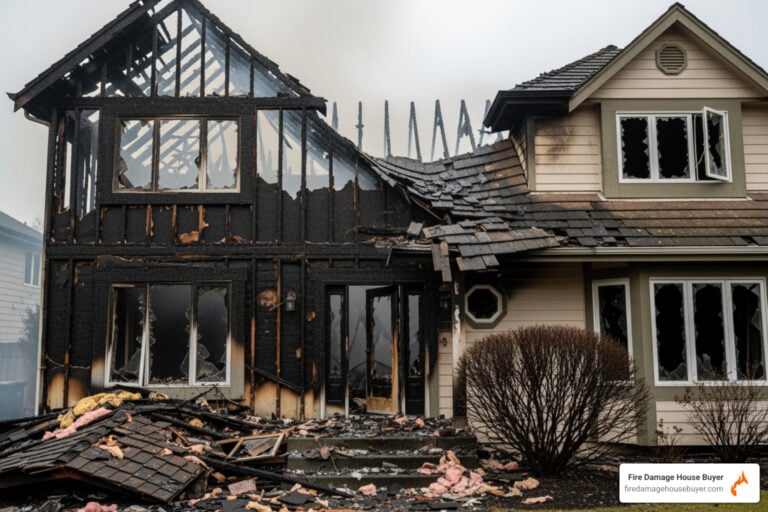Why Acting Quickly After a House Fire Can Save You Thousands
Knowing what to do if your house burns down can mean the difference between financial recovery and devastating loss. Here are the immediate steps you must take:
Immediate Actions (First 24-48 Hours):
- Ensure safety – Wait for fire department clearance before entering.
- Contact insurance company – File your claim within 24 hours.
- Document everything – Take photos and videos of all damage.
- Secure temporary housing – Use your Additional Living Expenses coverage.
- Protect your property – Board up openings to prevent further damage.
According to the American Red Cross, home fires are the most common disaster in the United States. The emotional toll is overwhelming, but beyond the trauma lies a complex web of insurance claims and restoration costs that will determine your financial future.
The reality of fire damage restoration costs:
- Minor smoke damage: $3,000 – $15,000
- Moderate structural damage: $25,000 – $75,000
- Major reconstruction: $100,000 – $300,000+
- Complete rebuild: Often exceeds original home value
The path forward isn’t always about rebuilding. Many homeowners find that selling their fire-damaged property as-is provides a faster, less stressful solution.
I’m Daniel Cabrera, and over my 15 years as a real estate investor, I’ve helped over 275 families steer what to do if your house burns down. Whether you choose to rebuild or Sell Fire Damaged House for cash, a clear action plan makes all the difference.
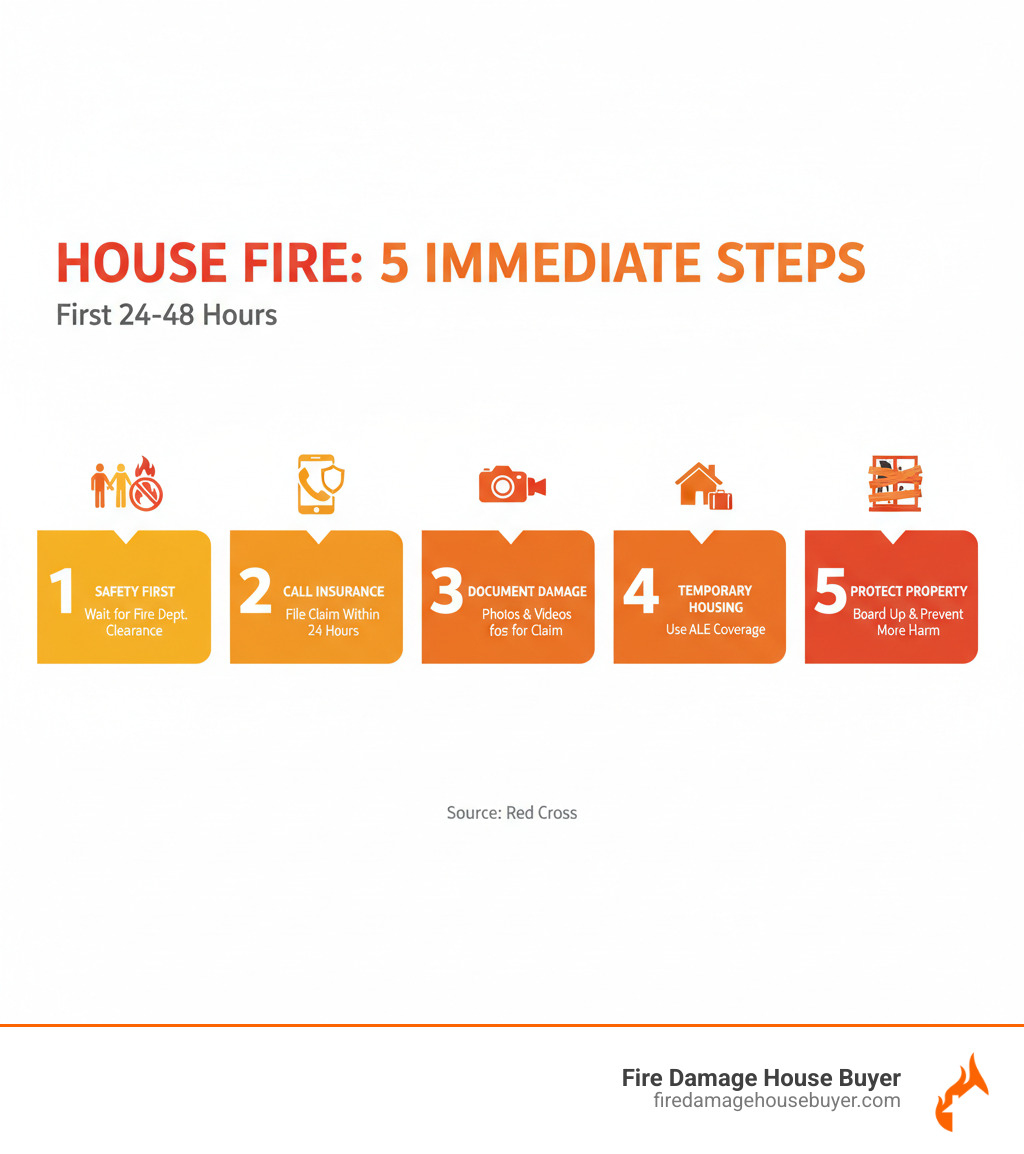
Immediate Steps: The First 48 Hours
In the crucial first hours after a house fire, focusing on the right priorities can save you thousands and protect your family’s future. Your mind races with a thousand thoughts about what to do if your house burns down, but these steps are paramount.
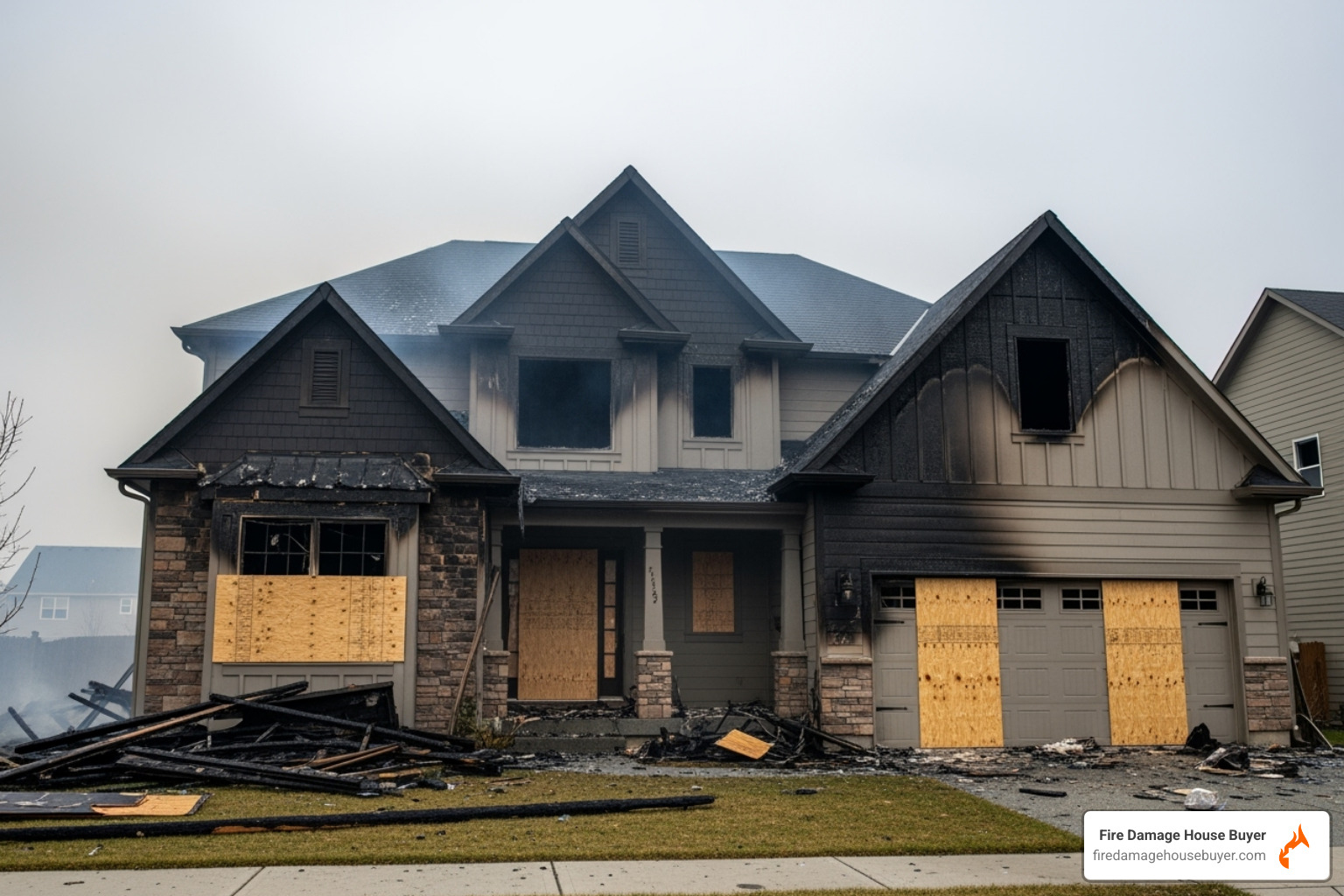
Safety comes first, always. Do not enter your home until the fire department gives official clearance. Hidden dangers like structural collapse, electrical hazards, and toxic fumes can be deadly. Get immediate medical help for any burns or smoke inhalation, and have pets checked by a veterinarian.
Reach out to your support network. Call family and friends to let them know you’re safe and to ask for support. If your home is unlivable, your homeowners insurance’s Additional Living Expenses (ALE) coverage typically pays for hotels or rentals. If you don’t have insurance, disaster relief organizations like the American Red Cross and Salvation Army provide emergency shelter, food, and clothing.
Secure your property before leaving. A damaged home is vulnerable to weather and theft. Professional board-up services can cover openings within hours, preventing thousands in further losses. The decisions you make now set the tone for your entire recovery. For detailed guidance, check out our guide on home fire recovery.
Health and Safety Precautions
The fire itself often causes less long-term damage than the toxic smoke and soot left behind. These particles create health hazards that can last for months if not properly addressed.
- Toxic Residues: Soot contains acidic particles that cause respiratory problems and skin irritation. The water used to fight the fire can also be contaminated.
- Structural Dangers: Heat weakens steel and wood, making floors and ceilings unstable even in rooms untouched by flames.
- Electrical Hazards: Damaged wiring and melted outlets can cause electrocution or new fires. Never turn on utilities yourself.
When cleared for a brief re-entry, proper protective gear is not optional. Information on home fire safety emphasizes that even short exposure can cause lasting health problems.
Essential safety gear for re-entry:
- N-95 mask or better respirator
- Heavy-duty gloves
- Sturdy boots
- Long pants and sleeves
- Safety glasses
Making a home safe again requires professional remediation that can cost $15,000 to $75,000 or more. Many homeowners find selling their property as-is provides a simpler path forward than dealing with months of restoration and health risks.
What to do if your house burns down: Navigating Insurance and Finances
When you’re dealing with the aftermath of a house fire, navigating insurance and finances is where your recovery truly begins.
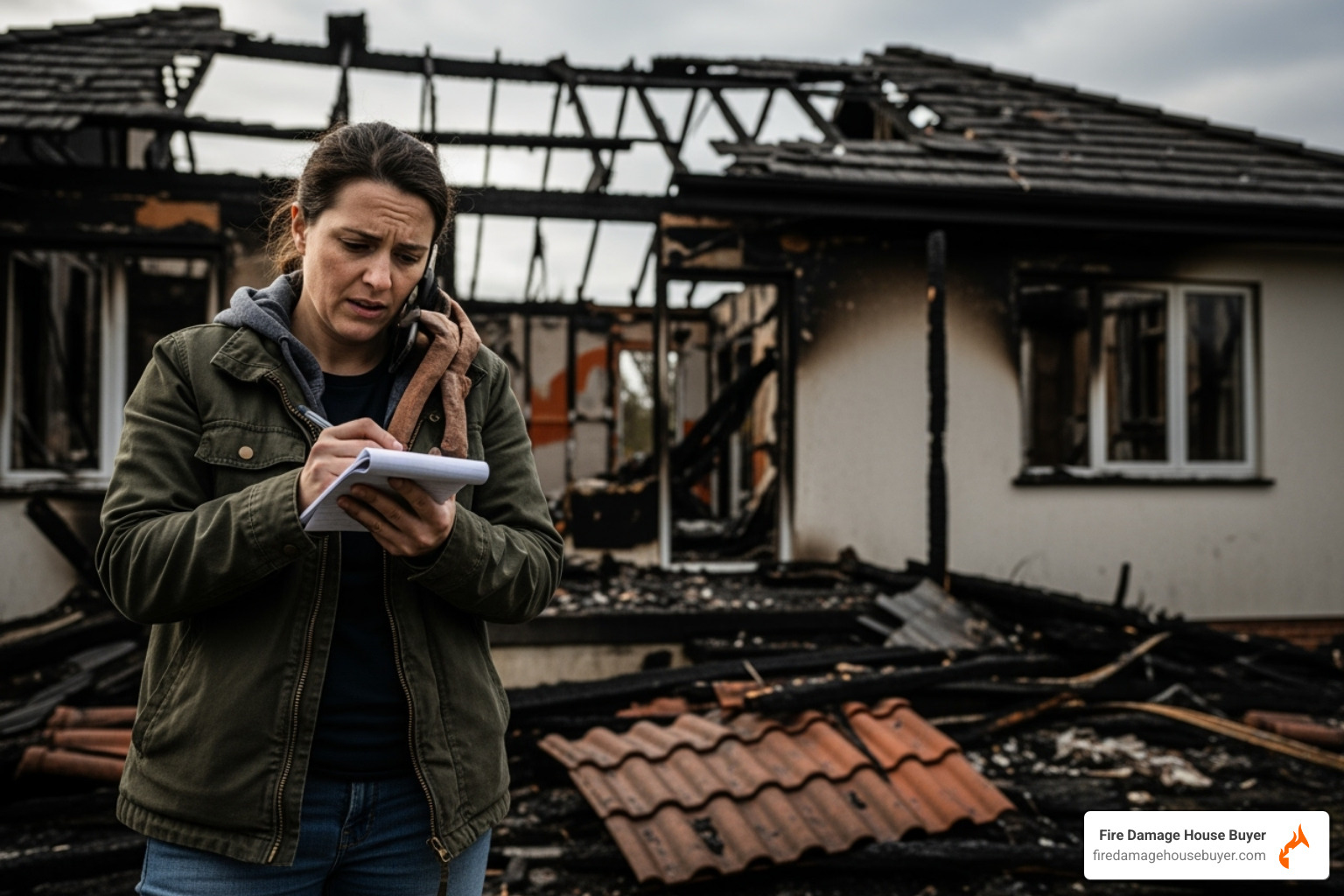
Contact your insurance provider within 24 hours. The sooner you file your claim, the faster your recovery can begin. Understand your policy’s key components: dwelling coverage (for the structure), personal property coverage (for belongings), and Additional Living Expenses (ALE) to cover costs like hotels and meals while your home is uninhabitable. Keep every receipt.
Document all damage carefully. Take photos and videos of everything and create a detailed inventory of destroyed items. This documentation is your lifeline when working with the insurance adjuster, whose job is to assess the damage based on your policy. For more strategies, see our House Fire Insurance Claim Tips.
Understanding your personal property coverage is key:
| Feature | Replacement Cost Value (RCV) | Actual Cash Value (ACV) |
|---|---|---|
| Definition | Cost to replace an item with a new one of similar quality today | Replacement cost minus depreciation (age, wear and tear) |
| Payout | You initially receive ACV, then the difference (depreciation) once you replace the item | You receive only the depreciated value of the item |
| Benefit | Allows you to replace items with new ones without out-of-pocket cost | Pays less, as it accounts for the item’s age and condition before the fire |
RCV coverage provides a higher payout, while ACV can leave you with a significant gap to cover the cost of new items.
What to do if your house burns down and you don’t have insurance
If you don’t have insurance, the situation is challenging but not hopeless. Act quickly to access these resources:
- Disaster Relief: The American Red Cross and Salvation Army provide immediate help with shelter, food, and clothing.
- Community Support: Churches, civic groups, and neighbors often organize fundraisers and donation drives.
- Local Charities: Contact your city or county government about emergency assistance programs for disaster victims.
- Crowdfunding: Platforms like GoFundMe have helped many fire victims rebuild.
What to do if your house burns down with a mortgage
If you have a mortgage, you must notify your mortgage lender immediately. Your lender is typically listed as a “loss payee” on your insurance policy, meaning dwelling coverage checks are made out to both you and your lender. The lender will use the funds to pay off the mortgage first, then release the remaining money for rebuilding. You are generally still required to continue mortgage payments, so check your policy for coverage that may help with this. The financial complexity is a major reason many homeowners choose to Sell Fire Damaged House instead of rebuilding.
The Crossroads: Rebuilding vs. Selling Your Fire-Damaged House
After the immediate crisis, you’ll face a critical decision: should you rebuild your fire-damaged home or sell it as-is and start fresh? This choice has significant financial and emotional consequences.
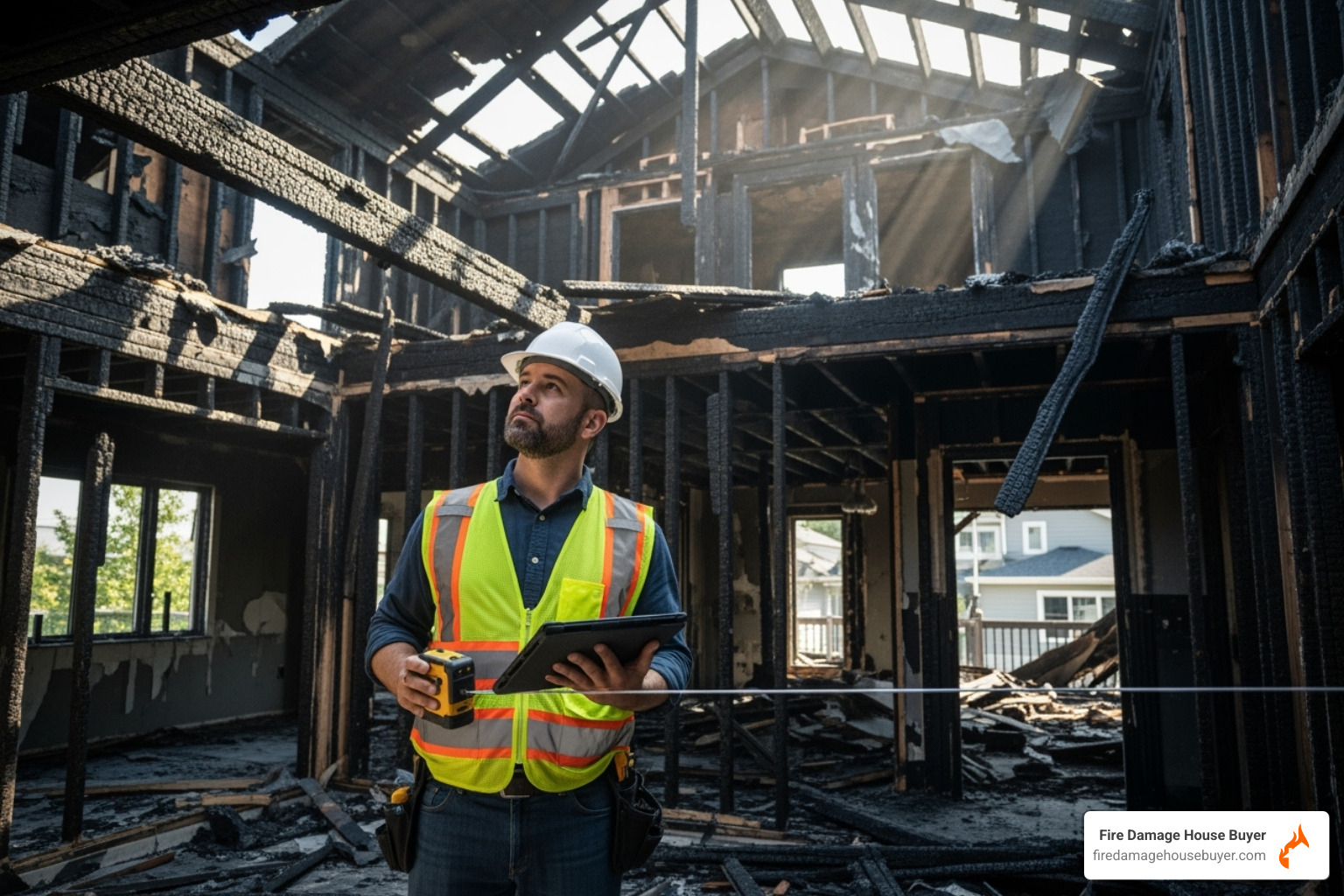
Assessing the extent of damage is complex. Beyond the flames, smoke and soot penetrate walls and ductwork. Heat can warp structural beams and crack foundations, while water from firefighting efforts leads to mold. The restoration process is a multi-step ordeal involving smoke removal, water extraction, structural repairs, and finish work, all coordinated between multiple specialized contractors.
The hidden costs of rebuilding can be staggering. You may face mandatory code upgrades, extended temporary housing costs, and rising permit fees. Restoration bills that start at $75,000 can easily balloon to over $200,000 once hidden damage is uncovered. Your insurance premiums will also likely increase after a major claim.
Typical timelines for repair vary dramatically. Minor smoke damage might take 4-6 weeks, but moderate structural damage often takes 3-6 months. A major reconstruction can stretch 8-12 months or longer, all while you live elsewhere and manage the stressful process. For a deeper look, see our guide on What to Do If Your House Burns Down.
For many families wondering what to do if your house burns down, there’s a simpler alternative: selling your house as-is. This path eliminates the stress of managing a complex restoration, the risk of cost overruns, and the emotional toll of a long-term project. At Fire Damage House Buyer, we buy fire-damaged houses for cash, with no repairs or commissions. Learn how to sell a fire-damaged house quickly, or Contact us for a no-obligation cash offer.
Salvaging and Cleaning Personal Belongings
Deciding what to salvage after a fire is a heartbreaking but necessary task. Here’s a quick guide:
- Non-porous items (metal, glass, ceramics) often survive well and can be cleaned.
- Porous items (furniture, clothing, books) absorb smoke and may retain odors and toxic residues even after cleaning. Professional restoration is sometimes possible but can be costly.
- Always discard any food, medication, and cosmetics exposed to heat or smoke.
- Electronics may have hidden internal damage and should be professionally inspected before use.
Acting fast is key, especially to prevent mold from water damage. Certified restoration professionals have the tools and expertise to assess what’s salvageable, but the cost can be high. Often, it’s safer and more cost-effective to replace items rather than risk bringing contaminants into your new living space.
Long-Term Recovery and Future Fire Prevention
The physical rebuilding is just one part of your journey—emotional healing often takes much longer. After facing what to do if your house burns down, it’s normal to feel grief, anxiety, and a loss of security. Don’t push yourself to “get over it.” Professional counselors and support groups can provide invaluable help. Get the support you need for emotional recovery to find resources for working through these challenges.
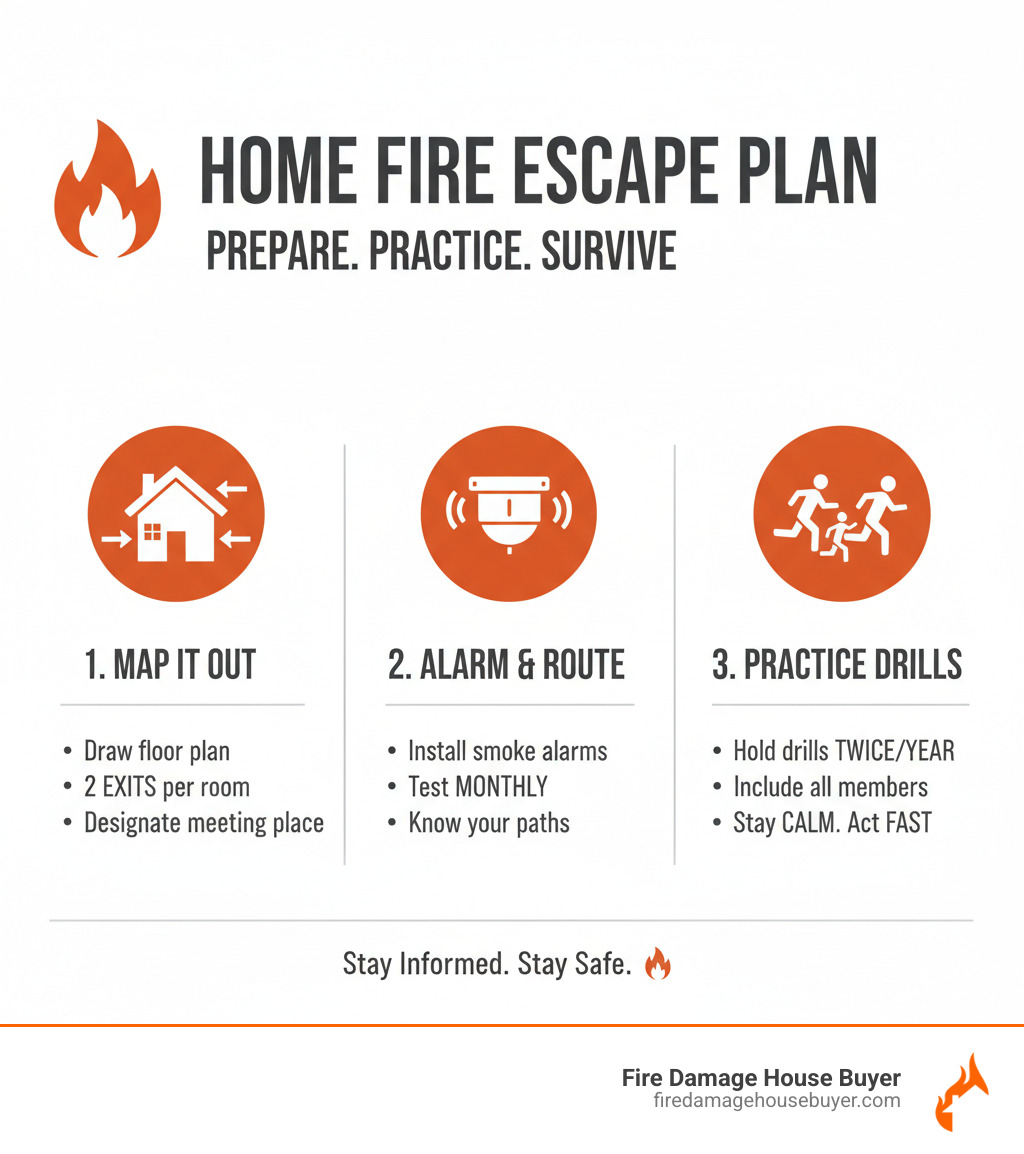
Replacing vital documents is a critical task. Contact relevant agencies to get new birth certificates, social security cards, passports, and deeds. Government sites like USA.gov offer guidance for disaster victims. Keep a notebook to track your requests.
Obtaining new insurance after a fire can be difficult, as insurers may see your property as a higher risk. An experienced insurance broker can help you find coverage. Be honest about the fire and highlight the new prevention measures you’ve taken.
Implement these fire prevention measures to protect your future home:
- Install Smoke Detectors: Place interconnected detectors on every level, inside bedrooms, and outside sleeping areas. Test them monthly.
- Keep Fire Extinguishers: Have them in the kitchen, garage, and near fireplaces. Ensure adults know how to use them (remember PASS: Pull, Aim, Squeeze, Sweep).
- Create a Family Escape Plan: Map two exits from every room and pick an outdoor meeting spot. Practice your escape plan regularly.
Going through these recovery steps can be exhausting. Many families find that starting fresh in a new home is a cleaner path forward. If you’re overwhelmed, selling your fire-damaged property as-is can provide the financial foundation and peace of mind to build a new beginning. Sell Fire Damaged House quickly and move on with your life.
Frequently Asked Questions about Recovering from a House Fire
Going through a house fire brings up many questions. You’re dealing with something most people never face, and it’s normal to feel overwhelmed. Here are answers to the questions I hear most often. For more, check out our Frequently Asked Questions page.
How long does it typically take to move back into a house after a fire?
The timeline depends entirely on the extent of the damage. Here are some realistic estimates:
- Minor Damage (smoke, small kitchen fire): 2-6 weeks for professional cleaning and minor repairs.
- Moderate Structural Damage (burned rooms, roof damage): 3 to 6 months for demolition, repairs, and restoration.
- Major Reconstruction or Complete Rebuild: 9 months to over a year, including the insurance process, permits, and construction.
The insurance claim process alone can take 1-3 months before any significant work begins. This extended displacement is a primary reason many families choose to Sell Fire Damaged House instead of rebuilding.
What items can be salvaged after a house fire, and how should they be cleaned?
Figuring out what can be saved is heartbreaking, but some items can be restored with proper handling.
- Best Chance: Non-porous items like metal, glass, and ceramics can often be cleaned with specialized solutions. Professional ultrasonic cleaning works well for delicate items.
- Tricky: Porous materials like clothing and upholstered furniture absorb smoke deeply. Professional fire restoration services may save them, but odors can linger. Solid wood furniture can sometimes be restored if damage is superficial.
- High Risk: Electronics often have hidden damage from heat and soot. They require professional inspection before being plugged in again.
- Always Discard: Food, medications, and cosmetics exposed to heat or smoke are unsafe and should be thrown away.
Professional restoration can be costly, sometimes exceeding an item’s replacement value. It’s often a trade-off between sentimental value and cost.
What are the health risks associated with living in a house with smoke and fire damage?
Never live in a fire-damaged home before it’s been professionally remediated. The invisible dangers can cause long-term health problems.
- Respiratory Problems: Inhaling microscopic soot particles can cause coughing, wheezing, and trigger asthma attacks. Long-term exposure can lead to chronic lung issues.
- Toxic Particles: Burning materials release hazardous chemicals and carcinogens that settle on surfaces and can become airborne again.
- Skin and Eye Irritation: Soot residue can cause rashes, itching, and burning sensations on the skin and in the eyes.
- Mold Growth: Water used to fight the fire can lead to mold within 24-48 hours, which triggers allergies and other respiratory problems.
Professional cleanup using HEPA filters and air scrubbers is essential to restore safe indoor air quality. Given the health risks and high cost of remediation, many families find that selling is the safest choice when deciding what to do if your house burns down.
Conclusion: Your Path to a New Beginning
After a house fire, you stand at a crossroads. The trauma is real, but with the right knowledge, recovery is absolutely possible. We’ve walked through the essential steps, from ensuring safety in the first moments to navigating the complex financial and emotional decisions that follow.
Your two main options are clear but very different:
- The Rebuilding Path: A long process involving contractors, building codes, and hidden costs. It can take 4-12+ months, all while you manage the stress from a temporary home.
- The Selling Path: A straightforward alternative. Selling your house as-is eliminates the stress, uncertainty, and long timelines of restoration. You get cash in hand quickly and can focus on finding a new home.
Many homeowners find that what to do if your house burns down isn’t always about putting the pieces back together. Sometimes, a fresh start serves your family better than a long, costly restoration.
The right choice depends on your financial resources, emotional bandwidth, and timeline. If you’re leaning toward the simpler path, we’re here to help. Our cash offers require no repairs, no commissions, and no lengthy closing processes. We provide a solution that works for you.
Surviving a house fire takes tremendous strength. You’ve already handled the unthinkable. Now it’s time to build the future that’s right for your family. Get a free, no-obligation, cash offer for your House and take the first step toward your new beginning.

